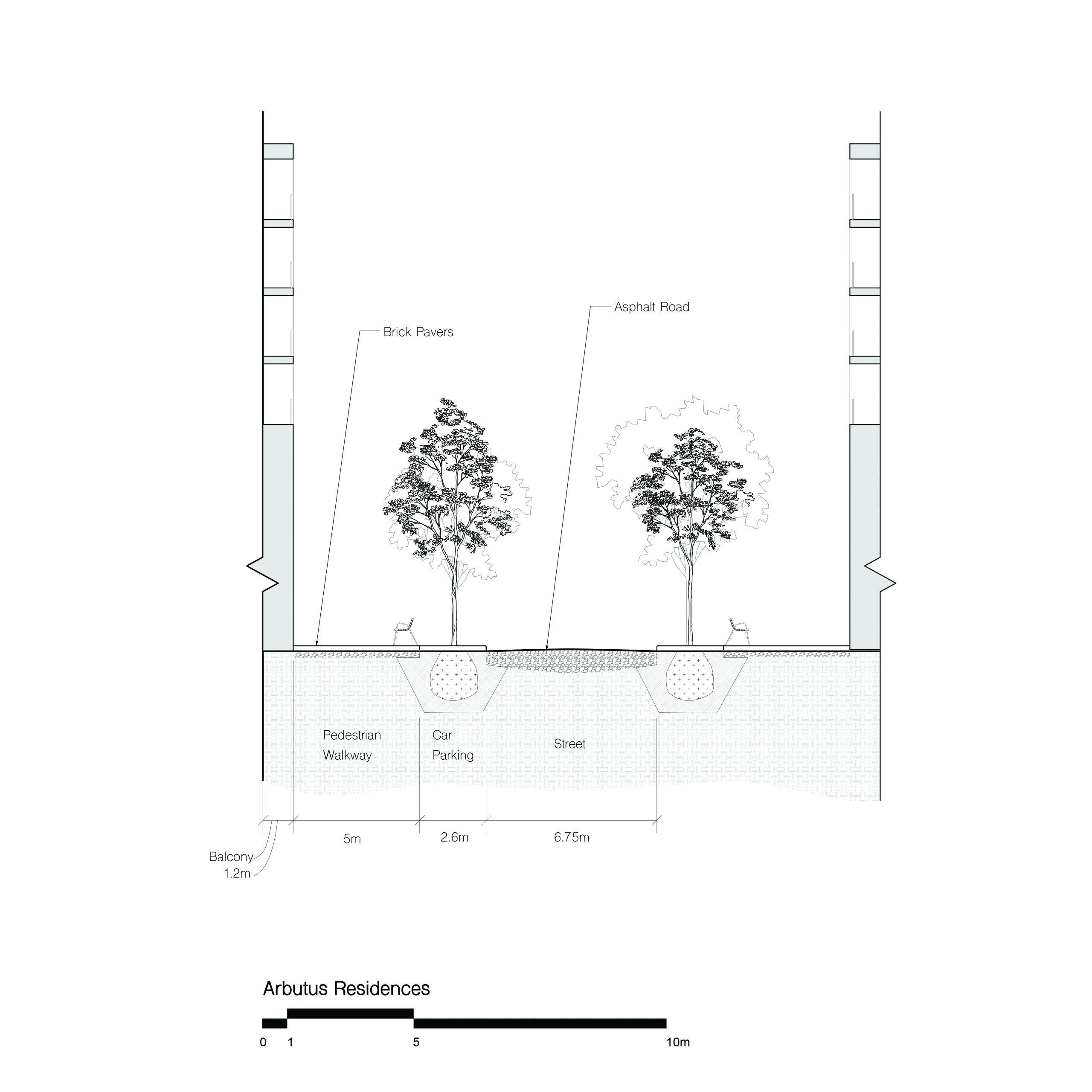Ground Conditions
Ground Typologies
Understanding the relationship between the existing ground and the neighbourhood, the sections below attempt to document the ground conditions and the services below. As a resource for landscape architects and designers it could help with the speculation on how an earthquake could fracture cement, disassemble bricks or hinder sidewalks. The proximity between a household, a low-rise apartment or a tower and a park is shown in scale. If open spaces become post disaster zones, the haptic textures on the ground should be designed to minimise tripping and falling. The materiality of the ground itself should aim to be habitable and soft enough for human rest.
Sections of Materiality
Following the overall plans, we will go into detail regarding the surface qualities of the parks and how those will affect the navigability/usability of parks. Emphasis can also be placed on their use for shelter; comfort, etc.


